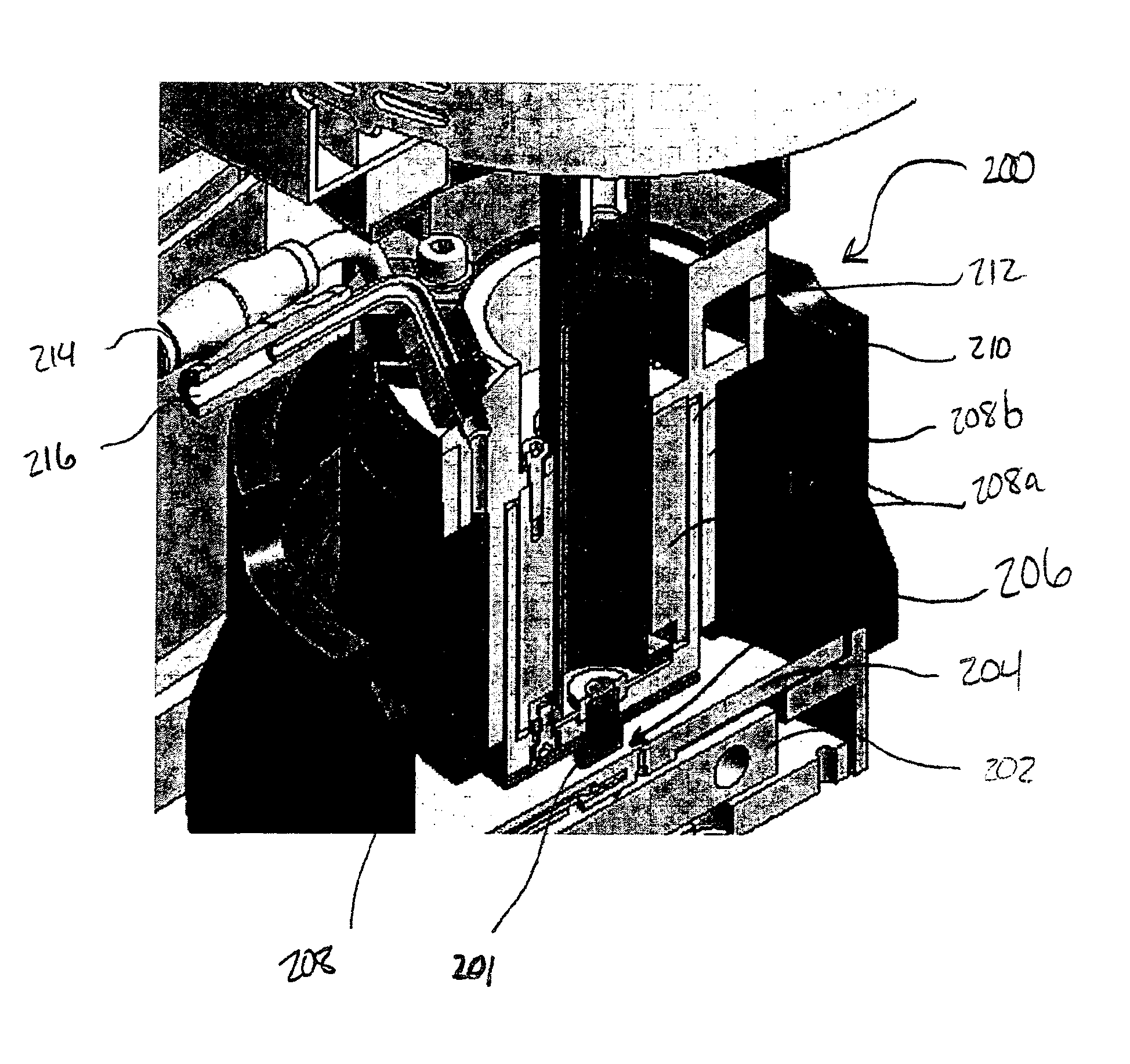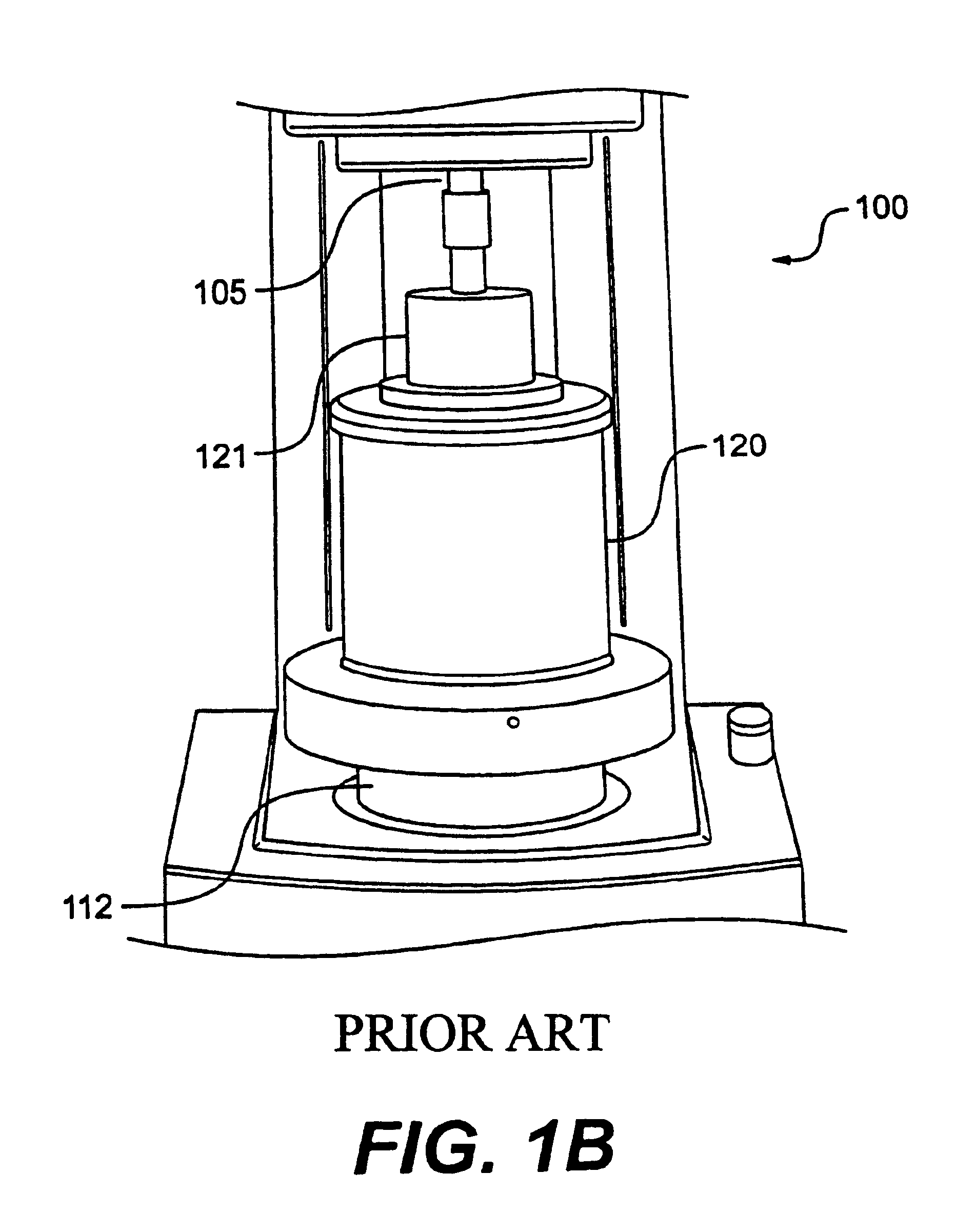Heat spreader for rotary rheometer
a rotary rheometer and heat spreader technology, applied in the field of rheometers, can solve the problems of increasing error, affecting the accuracy and validity of measurement, and controlling the temperature from just one side of the sample in this manner, so as to reduce the chimney effect, reduce the inertia, and maximize the surface area
- Summary
- Abstract
- Description
- Claims
- Application Information
AI Technical Summary
Benefits of technology
Problems solved by technology
Method used
Image
Examples
Embodiment Construction
[0018]FIG. 2 is a perspective cut-away schematic diagram that shows an exemplary embodiment of the upper geometry heater of the present invention. As shown, rheometer 200 is similar in most functional rehometry aspects as prior art devices. It includes upper geometry 201, a Peltier plate heater 202, a lower heat spreader 204 for distributing the heat generated by heater 202 to sample gap 206, which is located between the upper geometry 201 of rheometer 200 and lower heat spreader 204. Above sample gap 206, however, is an upper heat plate assembly 208 comprising an inner portion 208a and an outer portion 208b. Inner portion 208a and outer portion 208b combine to form an inverted “U” shaped heating element. One of skill in the art will understand the inner portions 208a and 208b may comprise a single unitary element or may comprise separate elements that may or may not be connected to one another. Upper heat plate assembly 208 fits over upper geometry heat spreader 210, which takes th...
PUM
| Property | Measurement | Unit |
|---|---|---|
| viscosity | aaaaa | aaaaa |
| elasticity | aaaaa | aaaaa |
| yield stress | aaaaa | aaaaa |
Abstract
Description
Claims
Application Information
 Login to View More
Login to View More - R&D
- Intellectual Property
- Life Sciences
- Materials
- Tech Scout
- Unparalleled Data Quality
- Higher Quality Content
- 60% Fewer Hallucinations
Browse by: Latest US Patents, China's latest patents, Technical Efficacy Thesaurus, Application Domain, Technology Topic, Popular Technical Reports.
© 2025 PatSnap. All rights reserved.Legal|Privacy policy|Modern Slavery Act Transparency Statement|Sitemap|About US| Contact US: help@patsnap.com



